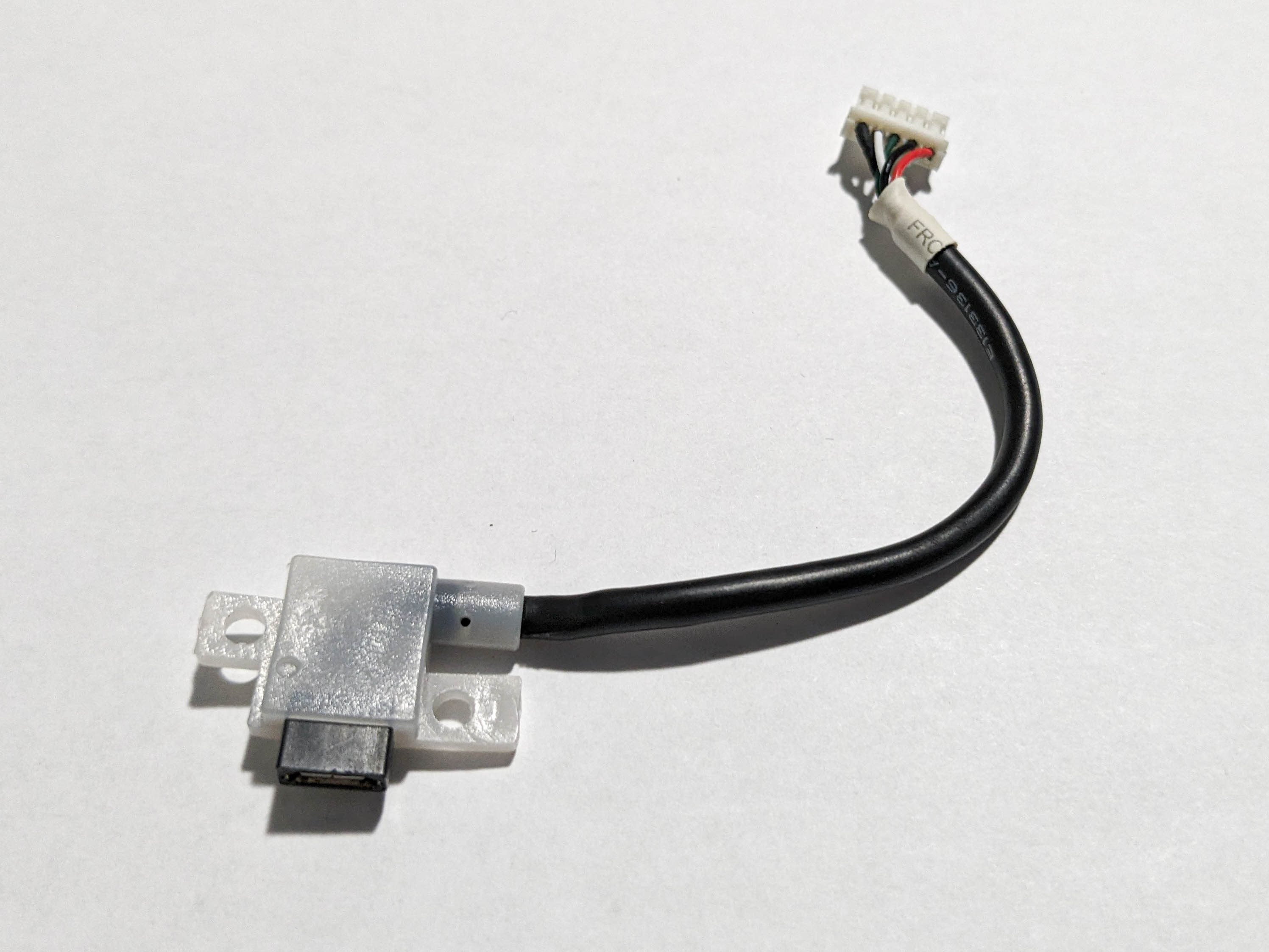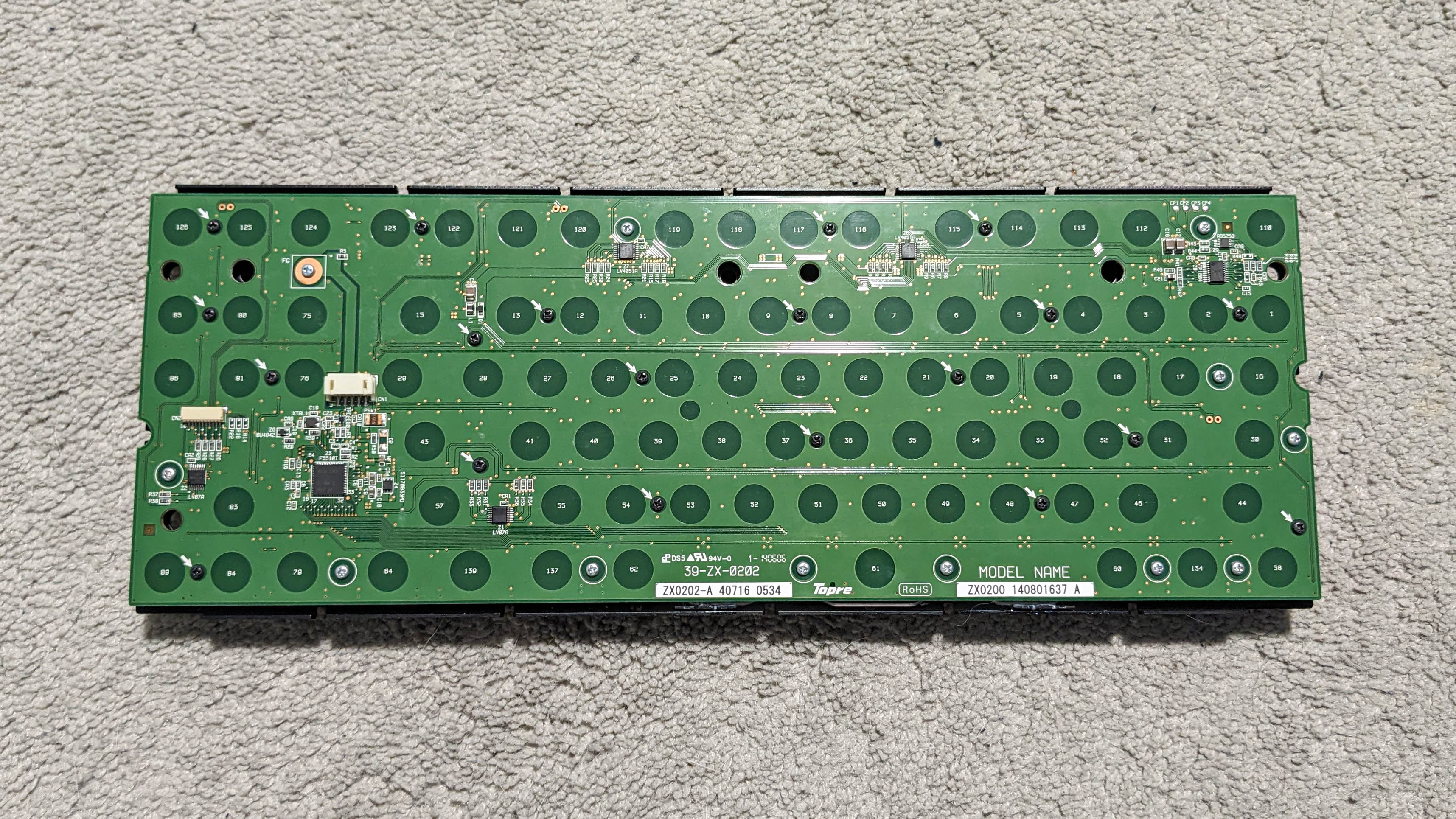Cooler Master Novatouch TKL
| Cooler Master Novatouch TKL | |
 |
|
| Switch | Topre, 45g uniform weighting, MX mount |
| Sense method | Capacitive |
| Protocol | USB |
| Keycaps | Laser-engraved ABS |
The Cooler Master Novatouch TKL is a keyboard sold by Cooler Master that uses Topre switches. This keyboard is notable for having using Cherry MX mount, compatible with modern custom keycap sets. The keyboard was released in late 2014 1); and discontinued sometime around 2016 as claimed by a Cooler Master employee on Reddit. 2)
If you have any documentation regarding the Cooler Master Novatouch, or images of the keyboard - particularly of the retail ISO and any prototype variants; please feel free to provide and document them!
Description
This keyboard uses capacitive Topre switches with a Cherry MX compatible keycap mount.
The keyboard was sold in both 87 key ANSI and 88 key ISO variants. On the back, the keyboard has “CM STORM” branding, along with a Micro-USB port on the back for plugging in a detachable cable. The stock cable is of a braided design, with a straight USB-A plug and a right-angled Micro-USB plug.
According to the quick start guide3), the Novatouch is capable of N-Key rollover on Windows, but defaults to 6-key rollover on other operating systems. Using the FN key along with one of the function row keys allows further functionality; F1 to F4 adjusts the typematic repeat rate, with settings of 1x, 2x, 4x, and 8x speeds; F5 to F8 is used to play or pause, stop, skip to previous track, or skip to the next track; F9 is used as a “Windows Lock” to disable the Windows/Super key;and F10 to F12 controls the volume by either muting, decreasing, or increasing the volume.
Construction
The top case is of a wrap-around design. The top case has hidden clips along the top and bottom edges of the bottom case, then further secured using four black pan-head screws that screw up from the bottom case into screw sockets in the top case. The bottom case has four holes for these screws - two of them are exposed, whilst the other two are covered by the rear label and a warranty sticker - therefore requiring puncturing or peeling off said stickers to disassemble the keyboard.4) There are four anti-slip rubber pads on the case, along with two flip-out feet that adjust the typing angle. The flip out feet has two additional anti-slip rubber pads to prevent slipping when the feet are extended out.
The top and bottom cases both have date stamps molding marks that can inform you when the specific piece was created. In the examples provided below, the top case marks suggest a manufacture date of August 02 2014, whilst the bottom case marks suggest that it was made on August 28 2014.
The keyboard assembly sits within the bottom case. The bottom case has pegs which help in aligning the keyboard assembly, with subsequent holes in the PCB to accommodate for the pegs. The Micro-USB port has two clips and two silver flat-head screws securing it to the bottom case, and is plugged into a 5-pin JST socket on the keyboard assembly; whilst the keyboard assembly is secured to the bottom case with two black pan-head screws.
The keyboard assembly consists of individual sliders and housings clipped into a steel metal plate, sitting over a rubber dome mat that covers capacitive cone-shaped springs that interact with the PCB to increase or decrease capacitance; this assembly is assembled using two different types of screws - 12 silver screws along the edge of the PCB with their location indicated by silk-screened circles, and 20 black screws throughout the PCB with locations indicated by arrows. The rubber dome mat sticks to the PCB from the factory; this seal may weaken overtime if the user frequently disassembles the assembly. The PCB also has two JST sockets - one slim one near the edge of the PCB that is left unused for normal usage, and a 5-pin JST socket where the Micro-USB port connects to the keyboard assembly. The PCB also has stickers and markings on the back; this includes the Topre branding, as well as a possible date stamp - the particular example shown lists a date of 2014 June 06.
There are three holes in the metal plate underneath the Scroll Lock, F9, and Caps Lock keys; the holes under the Scroll and F9 key are covered entirely by the switch housing, whilst the hole under the Caps Lock key is exposed. On corresponding positions on the PCB are points where an LED could be soldered into the keyboard assembly, along with SMD resistors for each of the lights, but are left unused in the retail keyboard. Prototype versions of this keyboard have been documented to have these LEDs and corresponding resistors. 5)
The keyboard assembly has three or four stabilized housings for the Backspace, Enter, and Shift keys depending on ISO or ANSI layout; and 1 unit housings for all the other keys, including the spacebar - an external coil spring is placed over the spacebar's switch to make the spacebar slightly stiffer than other keys. Futhermore, the spacebar has two stabilizer housings that contain their corresponding sliders.
The 1 unit keys consist of a black Topre housing, along with a purple slider with the Cherry MX cross mount.
The spacebar is 6.25 units long and compatible with MX spacebars with a stem in the centre; the spacebar interfaces with three sliders - the 1 unit switch slider, and two stabilizer sliders on either end of the spacebar; the stabilizer sliders are hooked into a wire, with the wire clipping into corresponding hooks inside of the the stabilizer housing.
The housings for other stabilized keys have three holes - one that interfaces with the centre keycap stem, and two that allows the other keycap stems to freely move through. The holes on the left and right of the housing have “crowns” that protrude upward. The slider has two semi-circle nubs that poke through the left and right holes of the housing.
Disassembly of the keyboard assembly is required to access the wires for stabilized keys and the spacebar stabilizer.
Keycaps
The stock keycaps are ABS with lasered and infilled legends, with Cherry MX mount. Legends vary by localized variants.
Prototypes
Cooler Master had sent prototypes to various members of the online keyboard community prior to the release of the Novatouch in 2014. The prototypes lacked the rear label and warranty stickers, slightly different alignment for some of the laser and infilled keys, had laser-etched backlit keycaps for the Caps Lock, F9, and Scroll Lock keys, and had corresponding blue LEDs for these keys. 6) 7)
Gallery
Acknowledgements
Photograph "CM Storm Novatouch - 10" used under a CC BY-NC-SA 2.0 license, © John Diew, October 11 2014.




















